| Engine | 19.5/20 |
| Suspension/Handling | 14.0/15 |
| Transmission/Clutch | 9.5/10 |
| Brakes | 9.5/10 |
| Instruments/Controls | 5.0/5 |
| Ergonomics/Comfort | 9.0/10 |
| Appearance/Quality | 9.5/10 |
| Desirability | 9.5/10 |
| Value | 5.0/10 |
| Overall Score | 90.5/100 |
I couldn’t take it anymore. My surroundings were whizzing past my eyeballs quicker than my brain could process. Instead of relenting and slowing down, I thought maybe an upshift would bring the engine speed lower and give me a moment to recalibrate. But before clicking up a gear I had to glance down at the tach to see how fast the engine was spinning. It was somewhere around 10-11,000 rpm. That’s pretty fast for most motorcycles, especially those displacing 1103 cc – but the Desmosedici Stradale inside the 2020 Ducati Streetfighter V4S I’m piloting shows an (indicated) redline of 14,500 rpm. I still had over 4,000 rpm left to melt my brain! Incredible.
The upshift brought the world back into focus for a fraction of a second before the relentless power fried my senses again. Discretion being the better part of valor – especially since I was just merging onto the freeway – I finally backed off and slowed down, but not before hitting a rate of speed I probably shouldn’t mention on a public forum like this.
Get the Flash Player to see this player.
Such is the nature of the new Ducati Streetfighter V4. Raw. Brutal. Mind-blowing. Ever since Ducati unleashed the 1103 cc V4 to the world in the first iteration of the Panigale V4, I’ve always described it the same way: Relentless. I’ve already used the word once in this review so far, and it’s likely I’ll use it several more times before this is over. It’s the only word I can think of that accurately portrays not only how much power and torque it has – 208 and 90 lb-ft, according to Ducati, – but also how it’s delivered. Despite all this, the new Streetfighter also has a mild side. But more on that in a minute.
Some Backstory
I’ve been cautiously reserved about the new Ducati Streetfighter V4 for completely irrational reasons. I was at the launch of the original 1098 Streetfighter, at the Ascari Circuit in Spain, several years ago. I remember being excited beforehand about a naked version of Ducati’s then-Superbike. I also remember falling ill the day of our test ride and not liking the bike at all for several reasons – quirky handling and questionable ergonomics being two major ones – which seemingly compounded the effects of my illness. To this day I still get a little sick when thinking of the Streetfighter.

Former E-i-C Kevin Duke was a fan of the original 1098 Streetfighter (Probably because it was easy to wheelie). I, however, was not. Also, my apologies for this being the only wheelie shot you’ll see in this whole review.
Fast forward to present day, and it seems as though history is repeating itself, with Ducati stripping the bodywork from its Panigale V4, putting a handlebar on it, and making a superbike for the road. The hype surrounding the bike was huge, strengthened further by the performance Pikes Peak master Carlin Dunne achieved with it before his untimely passing. On a personal level, I shared Buttonwillow Raceway with Dunne as he and the Ducati team tested the Streetfighter in preparation for Pikes. The ease with which he passed me and left me for dust further built upon the allure of the bike. Still, I kept reminding myself to stay calm and not make any judgements about the bike until getting a chance to ride it.
Coincidentally, the press launch for the new Streetfighter was supposed to be at the Ascari Circuit. A fitting venue for me to either pile on to my bad Streetfighter memories or to forge positive new ones. Of course, thanks to the Coronavirus, the entire launch was scrapped. As a consolation prize, a single Streetfighter V4 has come across the pond for the media to use, and Yours Truly was given the keys to it for two days.
Mild Mannered Beast
There’s only so much you can learn about a motorcycle in two days, but if the anecdote in the beginning was any indication, the new Streetfighter is absolutely outrageous. It’s Joker-inspired styling alone tells you to prepare for something loud and raucous, and once you thumb the starter the V4 roars to life with an aggressive growl before settling into a slightly less aggressive idle. The bike is loud. And this is all before even turning a wheel.
A closer look inside the 90º V4 engine reveals an 81mm bore, 53.5mm stroke, and a stratospheric 14:1 compression ratio. It’s rotated rearward 42º for better mass centralization, and the counter-rotating crankshaft spins in the opposite direction of the forward-moving wheels to help offset their gyroscopic effect. Air is sucked in through four twin-injector oval throttle bodies (52mm equivalent diameter) and 70mm intake funnels. Two electric motors control each bank of cylinders in this Ride-by-wire system, which you need for the electronic rider aids to work.
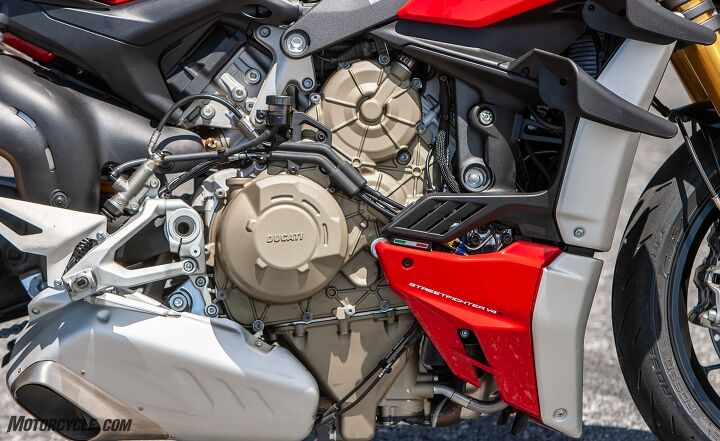
The Desmosedici Stradale 1103cc V4 engine. Wild when you want it, mild when you need it. But it’s always thirsty.
Of course, the signature trait of any modern Ducati is its desmodromic valve actuation, and in this case, the four camshafts are in control of 16 steel valves – 34mm on the intake side, 27.5mm for the exhaust – opening and closing them at precisely the right moments. To help cope with the effects of the constant slamming that comes with such high rev limits and desmo valve actuation, the valve seats are made of sintered steel.
This background info on the engine, and its MotoGP-inspired design, sets the stage for one wild ride. With such limited time with the Streetfighter, there was only one logical thing to do: take it straight to the canyons. With the ride mode set to Race (Sport and Street being the other two options), there’s a direct connection between right hand and rear tire. It’s on the aggressive side, but not overly so if you know what you’re doing. If you don’t, then the Streetfighter probably isn’t the bike for you, anyway. Flipping through the menus with the left switchgear gives the option of taming the power delivery a little, but I learned to like the direct feeling Race mode offered.
In short, the V4 just rips. It connects the dots between two points so quickly they basically blur into one. Everything comes at you fast, and that sensation of speed is further bolstered by the loud and throaty soundtrack the exhaust is bellowing out beneath you. There’s power everywhere, and it’s metered with precision. Ducati worked in conjunction with the racing department when developing the V4 lineage, and while that’s a good marketing and PR talking point, the net result comes through when discussing fuel mapping.
Like most sporty bikes I take on this nearly 30-mile ribbon of tarmac, I start by making sure I’m in the right gear for the varying twists and turns. Clicking through the gears in either direction is slick and smooth thanks to the Ducati Quickshifter, and I settle into a third-gear rhythm for a while. In third it’ll blast out of every corner with plenty of punch, stay in the meaty part of the powerband in the straight sections, and still pull nicely even in really tight stuff.
But with 90 lb-ft of torque on tap – 63 of them available from 4000 rpm – does it really matter what gear you’re in? As curiosity got the better of me, three more upshifts were made, and we were now rolling down the road in sixth. This really shouldn’t be much of a surprise, but it really didn’t make much of a difference. Other than the engine spinning at a slower rate, there’s still considerable pull in the straights, enough grunt in the corners, and just enough on tap to keep the V4 lugging along on a couple of the tighter turns. A 10% shorter final drive gearing compared to the Panigale helps here.
Are you getting the impression that the Streetfighter is fast, powerful, and borderline obscene? Good. We haven’t even begun to talk about its handling yet. Guess what: the Streetfighter thrives in the twisty stuff. Handlebar leverage is a big deal on naked bikes, and after bending into a few turns while riding the Streetfighter, I remember thinking to myself, “This handlebar width seems just about right.” There’s ample amount of leverage to tip the bike in, lift it out, and otherwise toss the bike around as you see fit. Other naked bikes tend to go too wide with the bars (which is fine, to a point), and having bars too narrow – well, let’s just save that for custom choppers.

Like Red Bull, Ducati also gives you wings. To help keep overall width in check, the Streetfighter uses biplane wings on either side (the Panigale uses a wide, singleplane wing). Ducati claims speeds as low as 31 mph will generate 4.4 lbs of downforce. In reality, could I notice any difference? No. Not on the street, anyway.
If we’re splitting hairs here, the Streetfighter does feel just a little lazier than what I remember of the Panigale, but that’s to be expected with a slightly longer wheelbase on the SF for better stability and to help reduce the tendency to wheelie. A bigger gripe of mine mirrors that of one Jorge Lorenzo: the gas tank shape. Its low, rounded profile doesn’t have anywhere to brace your legs while hard on the brakes, or contours to lock the outside leg while leaned over. You’re left to rely more on lower body and core strength to keep you in place.
A street ride, even a spirited one, doesn’t test the suspension like track conditions do, and on our test loop, the Ducati Electronic Suspension on this S model provided a neutral, compliant motorcycle. The settings are different for each ride mode, but you can then further change them at your discretion using the menus. Race mode firms up the Öhlins NIX-30 fork and Öhlins TTX36 shock, and while there is the option to change the damping settings in either “Dynamic” (based on how you want the bike to react in certain situations) or “Fixed” (adjusting more traditional compression/rebound settings, electronically), I didn’t see a need to change the standard Dynamic settings. Everything operates in the background, like it should.
Speaking of operating in the background, this would normally be the point where a discussion on the Bosch 6-axis IMU and the myriad of electronic rider aids it helps control would come in. Let’s revisit what they are:
- ABS Cornering EVO
- Ducati Traction Control (DTC) EVO 2
- Ducati Slide Control (DSC)
- Ducati Wheelie Control (DWC) EVO
- Ducati Power Launch (DPL)
- Ducati Quick Shift up/down (DQS) EVO 2
- Engine Brake Control (EBC) EVO
- Ducati Electronic Suspension (DES) EVO (S model only)
Of those, the last three are the only ones I can tell you anything about, as I know I didn’t use any of the others during our street ride (we’ll save the others for a future track test). We just finished talking about DES EVO above, and the quickshifter was discussed earlier, as well (it works well in both directions), leaving the EBC EVO as the last talking point. While engine brake characteristics probably aren’t something most people care about, having the option to play with it is neat. EBC does factor in lean angle based on the IMU, and of the three settings (3 being maximum, 1 being least engine braking), setting 2 was a happy medium for me as I like having the engine slow me down a little, but not too much.
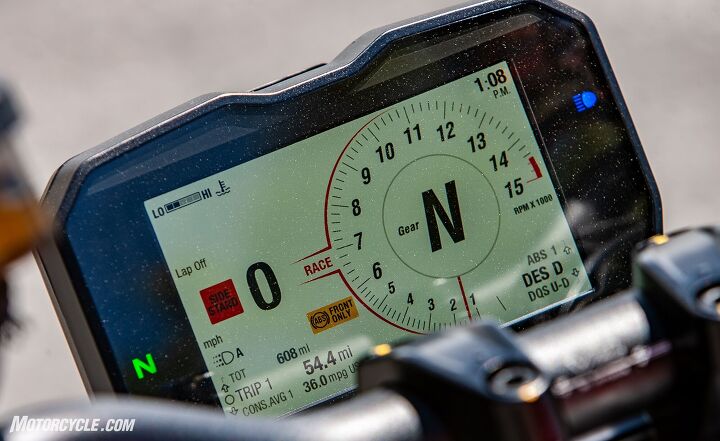
The TFT display is clear, easy to read, and changes between white and black backgrounds depending on ambient light conditions. There are a lot of adjustments you can make to the bike. Thankfully the menu screens are fairly easy to navigate through and manipulate.
Stopping, of course, is the brakes’ job, and a premium motorcycle like this one, unsurprisingly, gets the good stuff. We’re talking 330mm discs stomped on by Stylema calipers, being fed fluid through steel-braided lines delivered via a Brembo radial master cylinder. It’s easy enough to put the bike on its nose, with plenty of feel at the lever, but if things get out of hand, the Cornering ABS has your back (again, our usual disclaimer: NO rider aid will totally prevent you from crashing. Where there’s a will, there’s a way…). For the adventurous among us, Yours Truly included, the lowest ABS setting only activates the front wheel, putting rear wheel slides at your finger (and toe) tips.
The Real Revelation
By now, it’s probably clear the Streetfighter V4 is an outrageous motorcycle. But you were expecting that, right? You don’t take a Panigale V4, strip it down, and suddenly have a lame motorcycle. Obviously, it’ll still make quick work of a canyon road and will more than hold its own on a racetrack, too. This is the kind of performance you expect from a Ducati sportbike.
Frankly, none of what I wrote above surprised me about the Streetfighter either. I expected the bike to be fast and wild. My preconceived reservations based on my last go-round with the 1098 SF were thrown out the window quickly. I was more concerned the Streetfighter would be unbearable at a normal pace. It’s no secret we haven’t been very kind to some of the V-Twin Ducatis of yesteryear about seating position and especially heat. Would simply getting to the good roads from my house on the Streetfighter make me hate the bike before I even got a chance to see what it could really do?
No. Not at all. In fact, more surprising to me than its high performance is… its low performance. Just rolling around at normal speeds – around town, slogging on the freeway, etc. – the Streetfighter V4S behaves like a pussycat; power comes on in a nice, smooth fashion, and the abundance of torque means it doesn’t really matter what gear you’re in. The seating position is comfortable with the bars placing you more upright, but still in a sporty stance, while the pegs are a little lower than the Panigale’s. Even the seat itself has more padding than the Panigale. There’s even plenty of steering sweep from side to side. So, slow-speed maneuvers are, dare I say it, easy. It’s not a bad place to spend a moderate amount of time.
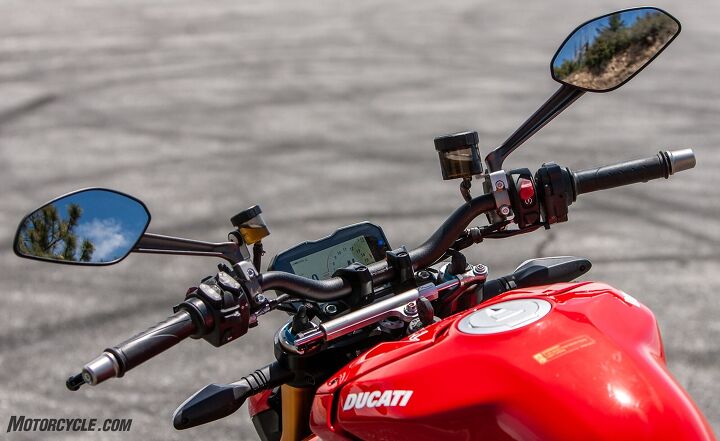
The bars are wide – but not too wide – to give ample leverage. View from the mirrors is decent, though the adjustment range is limited and they don’t fold in. Note also the Öhlins steering damper on our S model.
Best of all – there’s no unbearable heat! The sizzling-hot temps that were so prevalent on V-Twin Panigales aren’t present on the Streetfighter. At speed, hot air is smartly diverted away from the rider, no doubt aided (maybe headlined?) by the F1-inspired extractors behind the radiator. I’ll admit, when I first read about these extractors, I thought it was a load of BS, but now, having ridden the bike, I’m surprised how well they work. At a stop, when the engine is idling and radiating heat is normally the worst, the Streetfighter deactivates the rear cylinders (once coolant temp reaches 75ºC (167ºF)) just the way Harley-Davidson and other big cruisers have been doing for years. The result is being able to wait at a red light without the risk of heat stroke. At least, not from the motorcycle.
Performance, At A Cost
So, there you have it. The Ducati Streetfighter V4S is good. Very good. It’s got performance and (relative) comfort all rolled into one. It’s a crowded field in the naked, big displacement sporty bike market, but the Streetfighter V4 has found a way to muscle its way either at, or near, the pointy end of the field. Of course, performance like this comes at a cost – $23,995 to be exact, at least in the case of our V4S tester. For some context, here it is against its contemporaries and competition:
- Aprilia Tuono V4 1100 Factory: $18,999
- BMW S1000R: $14,045
- Kawasaki Z H2: $17,000
- KTM 1290 Super Duke R: $18,699
- MV Agusta Brutale 1000 RR: €29,990 (Yes, Euro. At press time US pricing hasn’t been communicated)
- Triumph Speed Triple RS: $16,500
- Yamaha MT-10: $12,999
MV Agusta aside, the Ducati is the most expensive in this field by five grand to its closest rival. Even at $19,995 for the standard Streetfighter with analog suspension and cast wheels, the Ducati is at the top of the price list (again, MV excluded). Whether or not it’s worth it is up to you, but just seeing all these bikes together on paper makes us anxious to get them together in person. But that’s a shootout for another time. For now know this: the Ducati Streetfighter V4 is really good. These were the emotions I expected to feel during the first go-round with the Streetfighter. Better late than never, I guess.
| 2020 Ducati Streetfighter V4 | |
+ Highs
|
– Sighs
|
|
In Gear
|
| 2020 Ducati Streetfighter V4 Specifications | |
|---|---|
| MSRP | $19,995, $23,995 (S Model) |
| Engine | Desmosedici Stradale 90° V4, counter-rotating crankshaft, 4 Desmodromic timing, 4 valves per cylinder, liquid-cooled |
| Displacement | 1103 cc |
| Bore x Stroke | 81 x 53.5 mm |
| Compression Ratio | 14.0:1 |
| Power | 208 hp @ 12,750 rpm (claimed) |
| Torque | 90.4 lb-ft. @ 11,500 rpm (claimed) |
| Fuel injection | Electronic fuel injection system. Twin injectors per cylinder. Full ride- by-wire elliptical throttle bodies (52mm equivalent diameter). Fixed 70mm intake funnels |
| Exhaust | 4-2-1-2 system, with 2 catalytic converters and 2 lambda probes |
| Gearbox | 6 speed with Ducati Quick Shift (DQS) up/down EVO 2 |
| Primary Drive | Straight cut gears; Ratio 1.80:1 |
| Ratio | 1=38/14 2=36/17 3=33/19 4=32/21 5=30/22 6=30/24 |
| Final Drive | Chain; Front sprocket 15; Rear sprocket 42 |
| Clutch | Hydraulically controlled slipper and self-servo wet multiplate clutch |
| Frame | Aluminum alloy “Front Frame” |
| Front Suspension | Fully adjustable Showa BPF fork. 43 mm chromed inner tubes (S Model: Öhlins NIX30 43 mm fully adjustable fork with TiN treatment. Electronic compression and rebound damping adjustment with Öhlins Smart EC 2.0 event-based mode). 4.7 in travel |
| Rear Suspension | Fully adjustable Sachs unit. Aluminum single-sided swingarm (S Model:Fully adjustable Ohlins TTX36 unit. Electronic compression and rebound damping adjustment with Öhlins Smart EC 2.0 event-based mode.) 5.1 in travel |
| Front Wheel | 5-spokes light alloy 3.50″ x 17″ (S Model: 3-spokes forged aluminum alloy) |
| Rear Wheel | 5-spokes light alloy 6.00” x 17” (S Model: 3-spokes forged aluminum alloy) |
| Front Tire | Pirelli Diablo Rosso Corsa 120/70 ZR17 |
| Rear Tire | Pirelli Diablo Rosso Corsa 200/60 ZR17 |
| Front Brake | 2 x 330 mm semi-floating discs, radially mounted Brembo Monobloc Stylema (M4.30) 4-piston calipers with Bosch Cornering ABS EVO |
| Rear Brake | 245 mm disc, 2-piston caliper with Cornering ABS EVO |
| Instrumentation | Last generation digital unit with 5″ TFT color display |
| Dry Weight | 397 lb (claimed) 392 lb (S Model) |
| Kerb weight | 443 lb (claimed) 439 lb (S Model) |
| Seat Height | 33.3 inches |
| Wheelbase | 58.6 inches |
| Rake | 24.5° |
| Trail | 4.0 inches |
| Fuel tank capacity | 4.23 gallons |
| Number of seats | Dual seat |
| Safety Equipment | Riding Modes, Power Modes, Cornering ABS EVO, Ducati Traction Control (DTC) EVO 2, Ducati Wheelie Control (DWC) EVO, Ducati Slide Control (DSC), Engine Brake Control (EBC) EVO, Auto tire calibration |
| Standard Equipment | Ducati Power Launch (DPL), Ducati Quick Shift (DQS) up/down EVO 2, Full LED lighting with Daytime Running Light (DRL), Sachs steering damper, (S Model: Ducati Electronic Suspension (DES) EVO with Ohlins suspension and steering damper), Quick adjustment buttons, Auto-off indicators, Passenger seat and footpegs |
| Optional Equipment | Ducati Data Analyser+ (DDA+) with GPS module, Ducati Multimedia System (DMS), Ducati LinkApp, anti-theft, heating grips |
| Warranty (months) | 24 months unlimited mileage |
| Maintenance | 7,500 miles/12 months |
| Valve Clearance Adjustments | 15,000 miles |





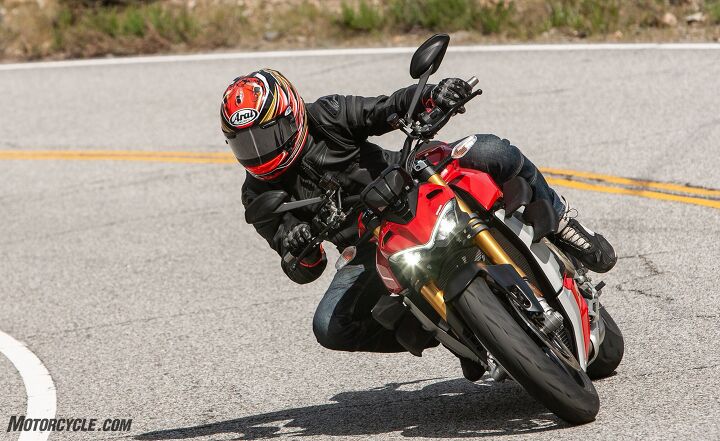







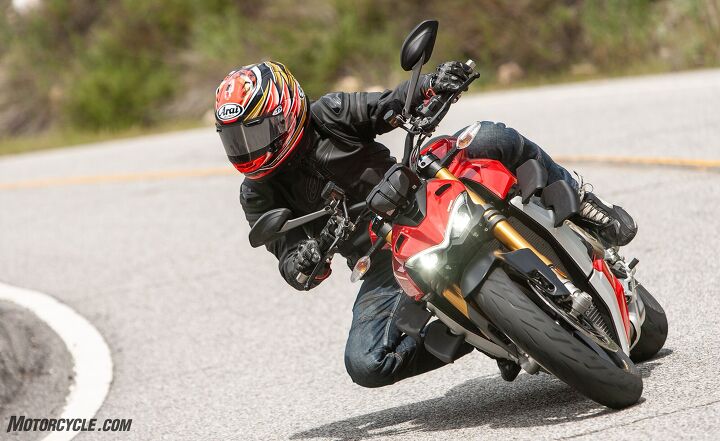







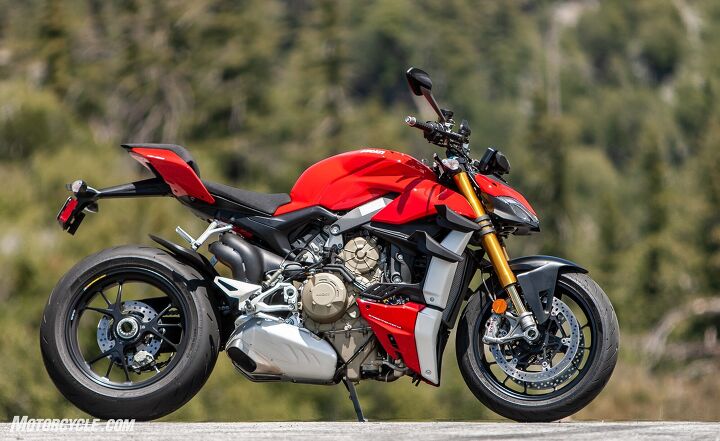





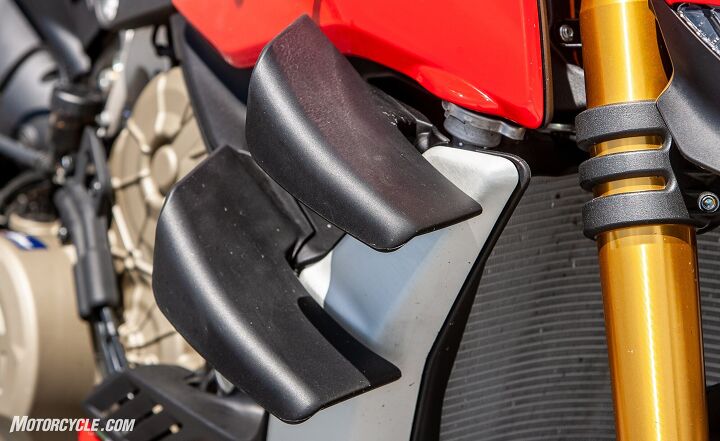



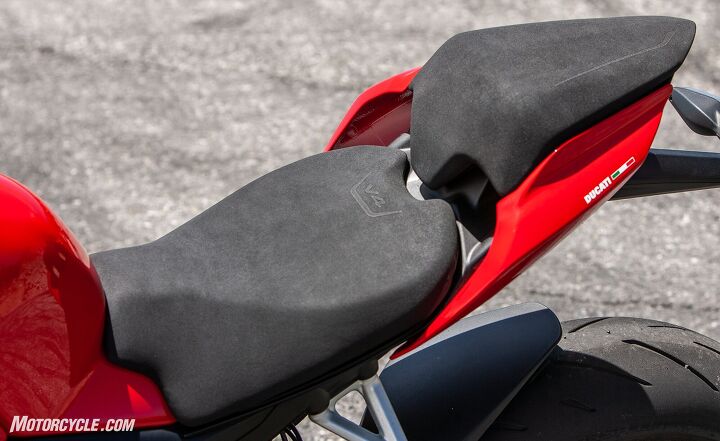


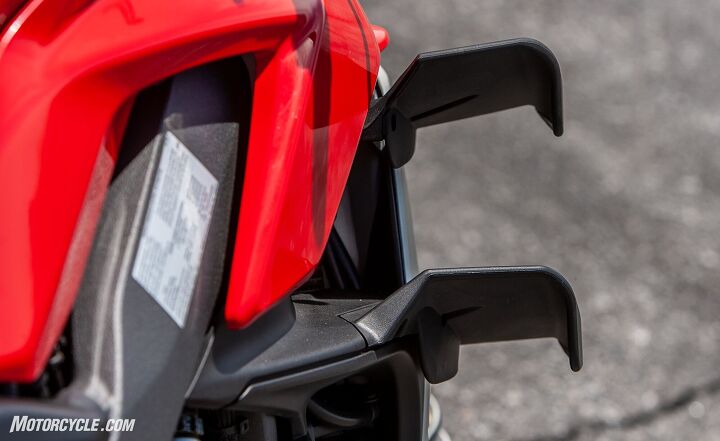

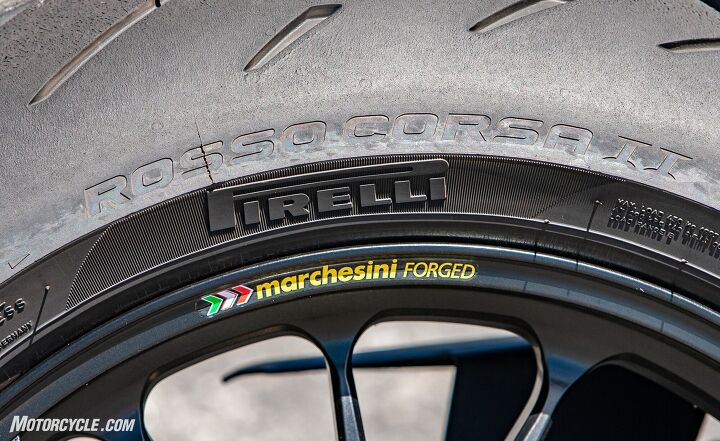
The post 2020 Ducati Streetfighter V4S Review – First Ride appeared first on Motorcycle.com.
【Top 10 Malaysia & Singapore Most Beautiful Girls】Have you follow?






